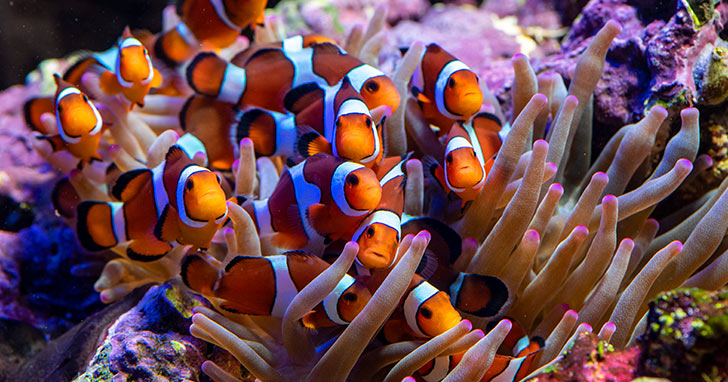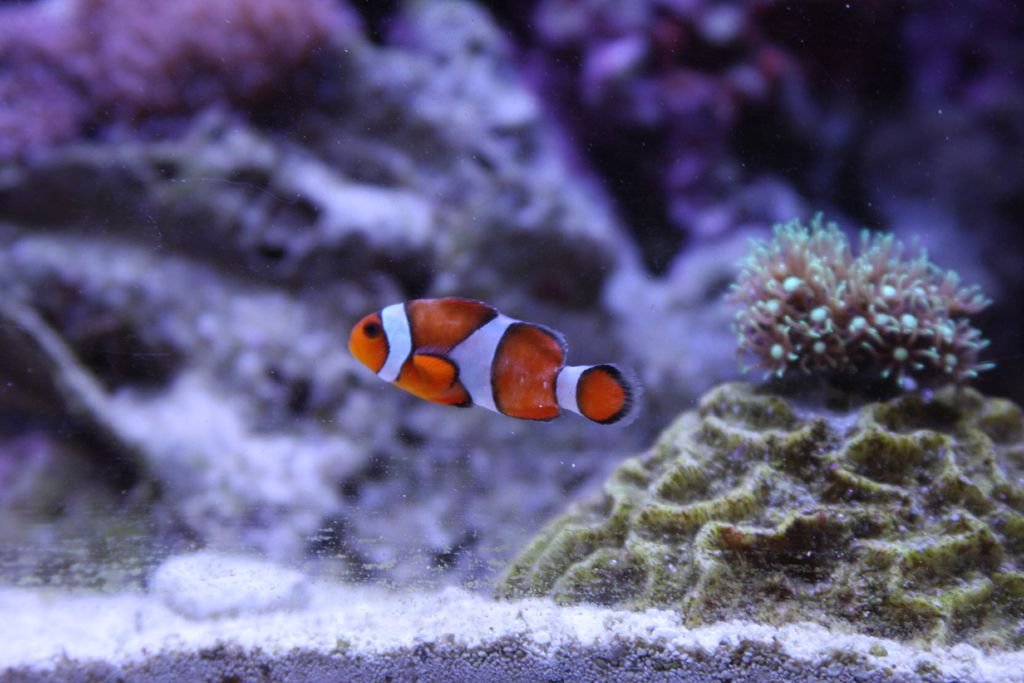Clownfish can suffer from various health problems, including parasites and bacterial infections. Poor water quality often exacerbates these issues.
Clownfish are popular among marine aquarium enthusiasts due to their vibrant colors and unique behaviors. Despite their hardiness, they can face several health challenges. Common ailments include parasites like marine ich and bacterial infections such as fin rot. Stress and poor water quality often worsen these conditions.
Maintaining a clean tank and a proper diet is crucial for their well-being. Regular monitoring helps in early detection and treatment of diseases. Effective preventive measures include quarantine for new fish and regular water testing. Healthy living conditions can significantly reduce the risk of health problems in clownfish.
Common Clownfish Diseases
Clownfish are popular pets in marine aquariums. But, they are prone to diseases. Knowing about these diseases helps in timely treatment.
Ich And Marine Velvet
Ich and Marine Velvet are common diseases in clownfish. These diseases are caused by parasites.
| Disease | Cause | Symptoms |
|---|---|---|
| Ich | Protozoan parasite | White spots, rubbing against objects |
| Marine Velvet | Dinoflagellate parasite | Gold dust on skin, rapid breathing |
Ich appears as white spots on the fish. The fish may rub against objects. This is due to irritation. Marine Velvet causes a fine golden dust on the skin. Affected fish may breathe rapidly.
Brooklynella Hostilis
Brooklynella Hostilis is another disease affecting clownfish. It is also known as Clownfish Disease.
- Caused by a protozoan parasite
- Symptoms include excessive mucus, breathing difficulty, and lethargy
This disease is very dangerous. Without treatment, it can be fatal. The fish produce extra mucus. This makes breathing difficult. Affected fish may also become very tired.
Early detection of these diseases is crucial. Always observe your clownfish closely. Healthy fish are active and have bright colors.
Symptoms To Watch For
Clownfish are hardy, but they can still get sick. Recognizing symptoms early can save their lives. Here are key signs to watch for in your clownfish.
Unusual Swimming Patterns
Clownfish usually swim with grace. If you see erratic swimming, it’s a concern. Look for:
- Swimming in circles
- Floating at the surface
- Resting at the bottom
These behaviors can indicate stress or disease. Act quickly to find the cause.
Discoloration And Spots
A healthy clownfish has vibrant colors. Discoloration can signal trouble. Common issues include:
| Symptom | Possible Cause |
|---|---|
| White spots | Ich or Marine Velvet |
| Red sores | Bacterial infection |
| Pale colors | Stress or poor water quality |
Check your clownfish daily. Early detection is key to treatment.
Preventative Measures
Keeping your clownfish healthy requires proactive care. Preventative measures are crucial to avoid health problems. Simple steps can make a big difference in your fish’s well-being.
Quarantine New Fish
Always quarantine new fish before adding them to your tank. This prevents the spread of diseases. Set up a separate quarantine tank. Observe the new fish for at least two weeks.
During quarantine, look for signs of illness. These include white spots, clamped fins, and lethargy. Treat any issues before introducing the fish to your main tank.
Here’s a quick checklist for quarantining new fish:
- Set up a quarantine tank.
- Observe new fish for two weeks.
- Look for signs of illness.
- Treat any detected issues.
Maintain Water Quality
Good water quality is essential for clownfish health. Regularly test your tank water. Maintain appropriate levels of pH, ammonia, nitrite, and nitrate.
Use a reliable water testing kit. Change 10-20% of the water weekly. This helps remove toxins and keeps the environment clean.
Here’s a recommended water quality maintenance schedule:
| Task | Frequency |
|---|---|
| Test water parameters | Weekly |
| Change 10-20% water | Weekly |
| Clean filters | Monthly |
Ensure your tank has a good filtration system. This helps remove waste and keeps water clean.
Use the following checklist to maintain water quality:
- Test water parameters weekly.
- Change 10-20% of the water weekly.
- Clean filters monthly.
By following these preventative measures, you can keep your clownfish healthy and thriving.

Credit: www.liveaquaria.com
Diet And Nutrition
Feeding your clownfish the right diet is crucial. Proper nutrition helps them stay healthy. A balanced diet supports their immune system and overall well-being.
Balanced Diet Essentials
Clownfish need a mix of foods. Include both plant and animal-based options. This helps them get all the nutrients they need.
- Protein: Essential for growth. Provide brine shrimp and mysis shrimp.
- Vitamins: Important for health. Offer spirulina and marine algae.
- Fats: Needed for energy. Include krill and fish oil supplements.
A varied diet prevents deficiencies. Rotate different food types weekly. This keeps their meals interesting and nutritious.
Avoiding Overfeeding
Overfeeding can lead to health issues. It causes obesity and water quality problems. Feed small amounts twice a day. Ensure they eat everything within a few minutes.
Leftover food decomposes. This affects water quality and can cause diseases. Be mindful of their feeding habits.
Here is a simple feeding schedule:
| Time | Food Type |
|---|---|
| Morning | Mysis shrimp |
| Evening | Marine algae |
Tank Environment
The tank environment plays a crucial role in the health of clownfish. Ensuring the right conditions can prevent many health problems. This section will cover the key aspects of creating an optimal tank environment for your clownfish.
Optimal Tank Size
Clownfish need a tank that mimics their natural habitat. A tank size of at least 20 gallons is ideal for a pair of clownfish. Larger tanks provide more stability and space for them to swim. Overcrowded tanks can lead to stress and health issues. Always choose a tank with enough space for each fish.
Appropriate Tank Mates
Choosing the right tank mates is vital for clownfish health. Clownfish are generally peaceful but can be territorial. Avoid aggressive fish that may bully clownfish. Good tank mates include:
- Goby Fish
- Blenny Fish
- Dartfish
These species coexist peacefully with clownfish. They help maintain a stress-free environment. Avoid larger predatory fish that may see clownfish as prey. Keeping compatible tank mates ensures a healthy and harmonious tank.
Stress Reduction
Stress is a common issue for clownfish. Reducing stress can improve their health. This section will discuss two ways to reduce stress: providing hiding spots and maintaining a consistent lighting schedule.
Providing Hiding Spots
Clownfish need places to hide to feel safe. Adding hiding spots can reduce their stress levels. Here are some ways to create hiding spots:
- Use rocks to create small caves.
- Add plants for natural cover.
- Include decorations with holes or tunnels.
Hiding spots help clownfish feel secure. This can lower their stress and improve their health.
Consistent Lighting Schedule
Clownfish need a consistent lighting schedule. This helps them know when to be active or rest. A regular schedule can reduce their stress.
Here is a simple lighting schedule:
| Time | Action |
|---|---|
| 8:00 AM | Turn on lights |
| 8:00 PM | Turn off lights |
Use a timer to keep the schedule consistent. This helps clownfish have a regular day and night cycle.
By providing hiding spots and a consistent lighting schedule, you can reduce clownfish stress. This will help them live healthier lives.
Regular Health Checks
Keeping your clownfish healthy needs regular health checks. These checks help spot problems early. Early detection can save their lives.
Routine Observation
Observe your clownfish daily. Watch for any changes in behavior. Healthy clownfish swim actively. They should eat well and breathe normally. Look for spots, discoloration, or torn fins. These signs can mean health issues.
A clean tank is vital. Dirty water can harm your clownfish. Check the water quality regularly. Use a test kit to measure pH, ammonia, and nitrate levels. Keep the tank clean and maintain a stable environment.
Professional Veterinary Care
Sometimes, a vet’s help is needed. Find a vet who specializes in fish. Take your clownfish for a check-up every six months. Vets can spot issues you might miss. They can also give advice on fish care.
If your clownfish looks sick, call the vet immediately. Early treatment can save your fish. Vets can prescribe medicines and treatments. They can also suggest dietary changes.

Credit: movementbrewingco.com
Emergency Care Tips
Clownfish are popular and colorful marine pets. They are prone to health problems. Knowing emergency care tips can save their lives. Here are some key actions to take.
Setting Up A Hospital Tank
Creating a hospital tank for your clownfish is crucial. A separate tank helps in isolating the sick fish. This prevents the spread of diseases. Follow these steps to set it up:
- Choose a small, clean tank.
- Fill it with dechlorinated water.
- Ensure the water temperature matches the main tank.
- Use a gentle filter.
- Add a heater and thermometer.
- Provide hiding spots using PVC pipes or decorations.
Regularly check water parameters. Keep the hospital tank clean and quiet.
Administering Medications
Proper medication can save your clownfish. Here’s how to do it:
- Identify the illness using reliable sources.
- Consult a vet for the correct medication.
- Read the medication instructions carefully.
- Follow dosage guidelines strictly.
- Monitor your fish for side effects.
Some common medications include:
| Medication | Purpose |
|---|---|
| Copper-based treatments | Parasitic infections |
| Antibiotics | Bacterial infections |
| Antifungals | Fungal infections |
Always use a separate container for mixing medication. Never overdose your fish.
Credit: www.reef2reef.com
Frequently Asked Questions
What Does Clownfish Disease Look Like?
Clownfish disease appears as white spots, frayed fins, rapid breathing, and lethargy. The fish may also rub against objects.
How Do You Treat A Sick Clownfish?
Isolate the sick clownfish in a quarantine tank. Maintain optimal water quality. Administer appropriate medication. Ensure a balanced diet. Monitor closely for improvement.
What Is The Lifespan Of A Clownfish?
A clownfish typically lives for 6 to 10 years in the wild. In captivity, it can live up to 15 years.
Are Clownfish Hard To Keep Alive?
Clownfish are relatively easy to keep alive. They require a stable, clean tank environment and proper diet. Regular monitoring ensures their well-being.
Conclusion
Maintaining clownfish health requires careful attention and proactive care. Regular monitoring and a clean environment are crucial. Early detection of issues can prevent serious problems. By addressing common health problems promptly, you ensure a thriving, vibrant clownfish. Happy and healthy clownfish enhance the beauty of your aquarium.
Prioritize their well-being for a rewarding experience.
